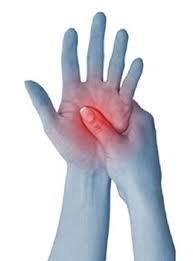 The company wants to ensure that it is doing all that is reasonably practicable to eliminate and/or reduce the risks from vibration when using such tools in the workplace. Here is some guidance for helping employees in your organisation use hand-held power tools.
The company wants to ensure that it is doing all that is reasonably practicable to eliminate and/or reduce the risks from vibration when using such tools in the workplace. Here is some guidance for helping employees in your organisation use hand-held power tools.
The first step should be to formulate a policy, with the purpose to prevent, so far as is reasonably practicable, the risk of hand–arm vibration syndrome (HAVS) arising from the use of hand-held vibrating tools and equipment. It should include the following.
A risk assessment should identify the various sources and characteristics of the vibration hazard, including the number of employees at risk, allowing for an overall risk evaluation. Those tools or processes of greatest risk should be prioritised and addressed first. It is important that the person carrying out any such assessment is competent to do so.
The basic measures for reducing occupational exposure to hand-transmitted vibration are to eliminate/reduce vibration by using alternative methods or equipment. Vibration transmission to the hands can be reduced by using tools fitted with “anti-vibration handles”.
Organisation at work, job rotation and suitably timed rest breaks may help to reduce vibration exposure. However, it should be remembered that the mathematical relationship between vibration magnitude and exposure time means that a large reduction in time is required before any significant effect on vibration magnitude is seen and it should, therefore, be considered low down the hierarchy of control.
It is important to provide information to employees on the risks associated with hand-transmitted vibration, as well as information on signs and symptoms of HAVS and why these should be reported to their employer, or, if applicable, to the occupational health staff as soon as they are identified.
Employees should be instructed on the actions required to minimise the risk and ways in which they can contribute to risk reduction and control, for example by maintaining good blood circulation, warming both hands and body prior to starting work in cold conditions, keeping warm while working, ensuring that tools are properly maintained, and reporting defects.
Further preventive measures include regular maintenance of vibrating tools and equipment. Information on how to correctly maintain items can be provided by manufacturers or suppliers. It is of equal importance to replace worn parts, correct unbalanced equipment and maintain anti-vibration mounts and devices.
Contact us should you require assistance.